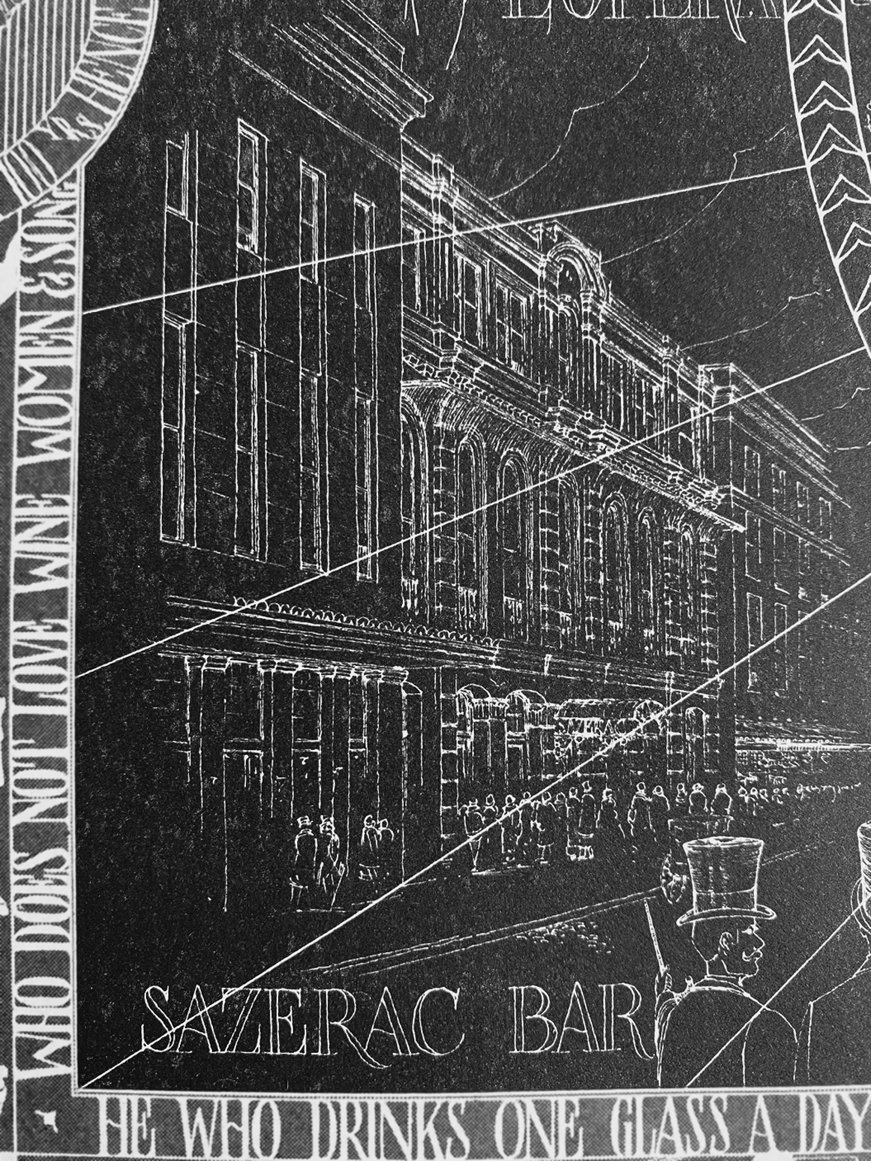Sazerac House (aka Sazerac Bar, Sazerac Saloon) was the pioneering New Orleans saloon that introduced the Sazerac cocktail to the world.
In the late 1850s, John B. Schiller took over the old Merchant’s Exchange and converted it into the Sazerac Coffee House. A combination saloon and liquor import house occupying two lots stretching between Royal Street and Exchange Place, the business took its name from Sazerac de Forge et Fils, an esteemed brand of imported cognac brandy. In 1871, Schiller’s clerk, Thomas B. Handy, took over the business and promptly renamed it Thomas H. Handy & Co., though locals still tended to call it the Sazerac House.
Through a complicated chain of events, a former employee of Handy’s named Vincent Micas ended up operating a rival Sazerac House in New Orleans, but it was Handy’s saloon—rebuilt from the ground up in 1882—that became one of the city’s most noted drinking establishments. In the 1880s and 1890s, one account remembered, the Sazerac House was “the meeting place of all the business and political men of the city. If one had a big business deal the Sazerac offered the logical place for its discussion: foot on rail, one discussed weighty matters while waiting for the cocktail.”
The cocktail in question became known as the Sazerac cocktail, but likely not until after Thomas Handy’s death in 1893. In 1903, Handy’s widow, his clerk, and William Wilkinson, the bar’s popular head bartenders, trademarked the word Sazerac and began selling a bottled premixed version of their saloon’s famous concoction, which they distributed across the country.
The Sazerac House flourished until the arrival of prohibition, and in 1920 the building was converted into fancy marble-adorned restaurant complete with an orchestra and a French chef. Thomas H. Handy & Co., reorganized as the Sazerac Company, survived the dry years as a grocery wholesaler. After Repeal, its principals relaunched the Sazerac House in a new location at 300 Carondelet street in the Central Business District, replicating the original Royal Street establishment down to the same brass spittoons and some of the old bartenders. Women were prohibited except one day per year—Mardi Gras.
The new Sazerac House lasted until 1948, when the Sazerac Company was purchased by the Magnolia Liquor Company and the saloon shuttered.
See also Sazerac Co. and Sazerac cocktail.
“A City Institution.” New Orleans Times, April 23, 1876, 12.
Moss, Robert F. “The Unexpurgated History of the Sazerac Cocktail.” http://www.robertfmoss.com/p/i-will-warn-you-in-advance-that-this.html (accessed October 30, 2015).
“Opening This Day.” New Orleans Daily Picayune, October 5, 1882, 2.
Quale, Jennifer. “The Drink that Old Orleans Made Famous.” New Orleans Times-Picayune, October 27, 1974.
“The Sazerac.” New Orleans Times-Democrat, September 1, 1895, 16.
By: Robert F. Moss
The only known picture of the Sazerac House, from the background of a Prohibition-era poster. The site is now a hotel garage.
Wondrich Collection.
 The only known picture of the Sazerac House, from the background of a Prohibition-era poster. The site is now a hotel garage. Source: Wondrich Collection.
The only known picture of the Sazerac House, from the background of a Prohibition-era poster. The site is now a hotel garage. Source: Wondrich Collection.
